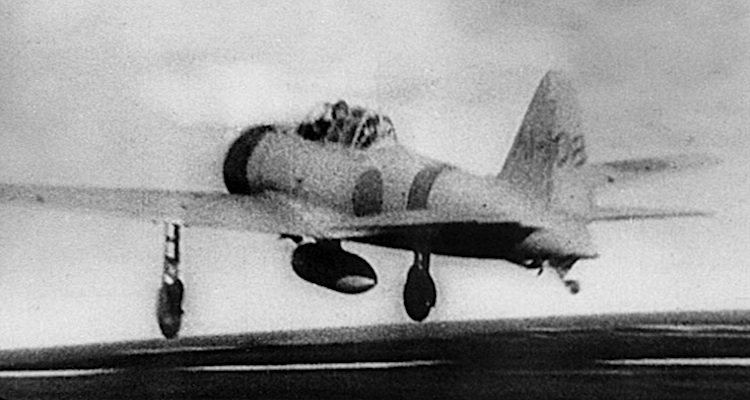Mr History –
Just discovered your website … WOW, can’t wait to read through it!
My question –
Is there any truth to the myth/rumor that Howard Hughes designed the Japanese Zero. Some say the US military turned down his H-1 effort and he then sold it (whatever) to the Japanese.
A Google search clearly gives credit to Jiro Horikoshi. I have searched your website but am unable to find anything on the subject.
Thank you in advance and thanks for much time and effort in putting together your website.
RKG
? ? ?
Dear RKG,
Myths about the origin of the Mitsubishi A6M2 Zero fighter seem to keep popping back up from time to time, long after they had been discredited. Because of a superficial resemblance, Americans wanted to believe that the Zero had been based on Howard Hughes’ H-1 racer, while British aviation buffs believed the same of the experimental Henry Folland-designed Gloster F.5/37, which had come out at the end of 1937 and finally retired without a production contract in 1941. Yet another candidate was the Seversky 2PA-B3 two-seat version of the P-35, 20 of which were purchased by Japan but rejected because the Japanese did not think they were maneuverable enough. Alexander Seversky’s reputation suffered so much for having sold the planes, however, that the company he founded changed its name to Republic Aviation.
http://www.daveswarbirds.com/Nippon/aircraft/Dick.htm
All of these Zero myths were founded primarily on American and European disbelief that the Japanese, stereotyped as second-rate imitators, could possibly have developed such an advanced and original design on their own. But the fact is that Jiro Horikoshi and his design team did just that, and far from out of the blue—the Zero’s basis had evolved from the A5M fighter, a clean monoplane with fixed, faired-over landing gear that had enjoyed success over China from 1938 until the Zero came out in 1940.
Feature articles dealing with the technology, facts and fiction surrounding the Zero can be found in the January 2009 and July 2012 issues of Aviation History magazine. You might also get a systematic idea of how its development proceeded (complete with the baptism of fire for both the A5M and A6M) in my recently published book, Fighter Aircraft Combat Debuts from Westholme Publishing LLC, Yardley Pa. (2014).
Sincerely,

Jon Guttman
Research Director
World History
www.historynet.com
More Questions at Ask Mr. History
Don’t miss the next Ask Mr. History question! To receive notification whenever any new item is published on HistoryNet, just scroll down the column on the right and sign up for our RSS feed.





